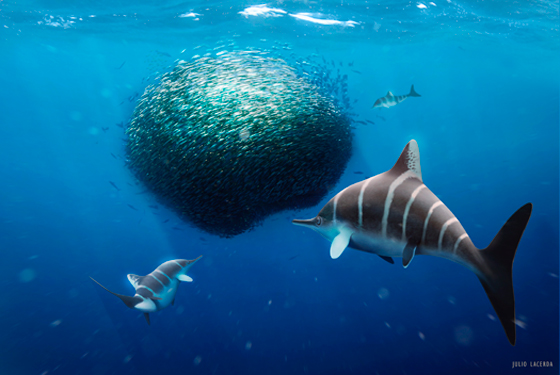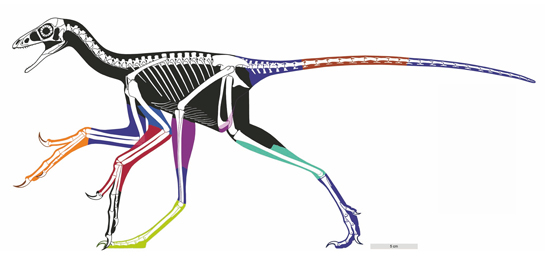The Sedgwick Museum in Cambridge has an exhibit that tells the remarkable story of the eurypterid Megarachne servinei. It was once thought to be a giant spider. However, it has been assigned to the Mycteroptidae family within the Euryptreida Order. In a recent blog post we looked at the eurypterid display at the Museum. In particular we commented upon the enormous Jaekelopterus rhenaniae, which is regarded as being one of the largest invertebrates known to science.
To view our earlier post about the giant Jaekelopterus rhenaniae and the eurypterid exhibit: A Colourful Eurypterid Size Chart.

In the exhibit highlighting giant invertebrates, a series of posters provide visitors with information how the palaeo-reconstruction artist Bob Nicholls worked with the researchers to create an interpretation of the fossil material. Picture credit: Everything Dinosaur.
Picture credit: Everything Dinosaur
Megarachne servinei
The genus name translates as “giant spider”. If the original scientific assessment had proved to be correct, then M. servinei would be the biggest spider known to science.
Part of this display explains how renowned palaeo-reconstruction artist Bob Nicholls worked with researchers to produce an accurate life reconstruction of this ancient South American invertebrate.

The life reconstruction of Megarachne servinei on display at the Sedgwick Museum (Cambridge). This illustration was created by talented palaeoartist Bob Nicholls. Picture credit: Everything Dinosaur.
Picture credit: Everything Dinosaur
Mike from Everything Dinosaur commented:
“Palaeoart brings long-extinct creatures back to life. The Megarachne servinei is a fine example. By combining science with illustration, it helps people visualise how these animals looked and lived. As a result, complex fossil evidence, which is often fragmentary becomes easier to understand.”
The Everything Dinosaur website: Dinosaur Models and Prehistoric Animal Figures.




Leave A Comment